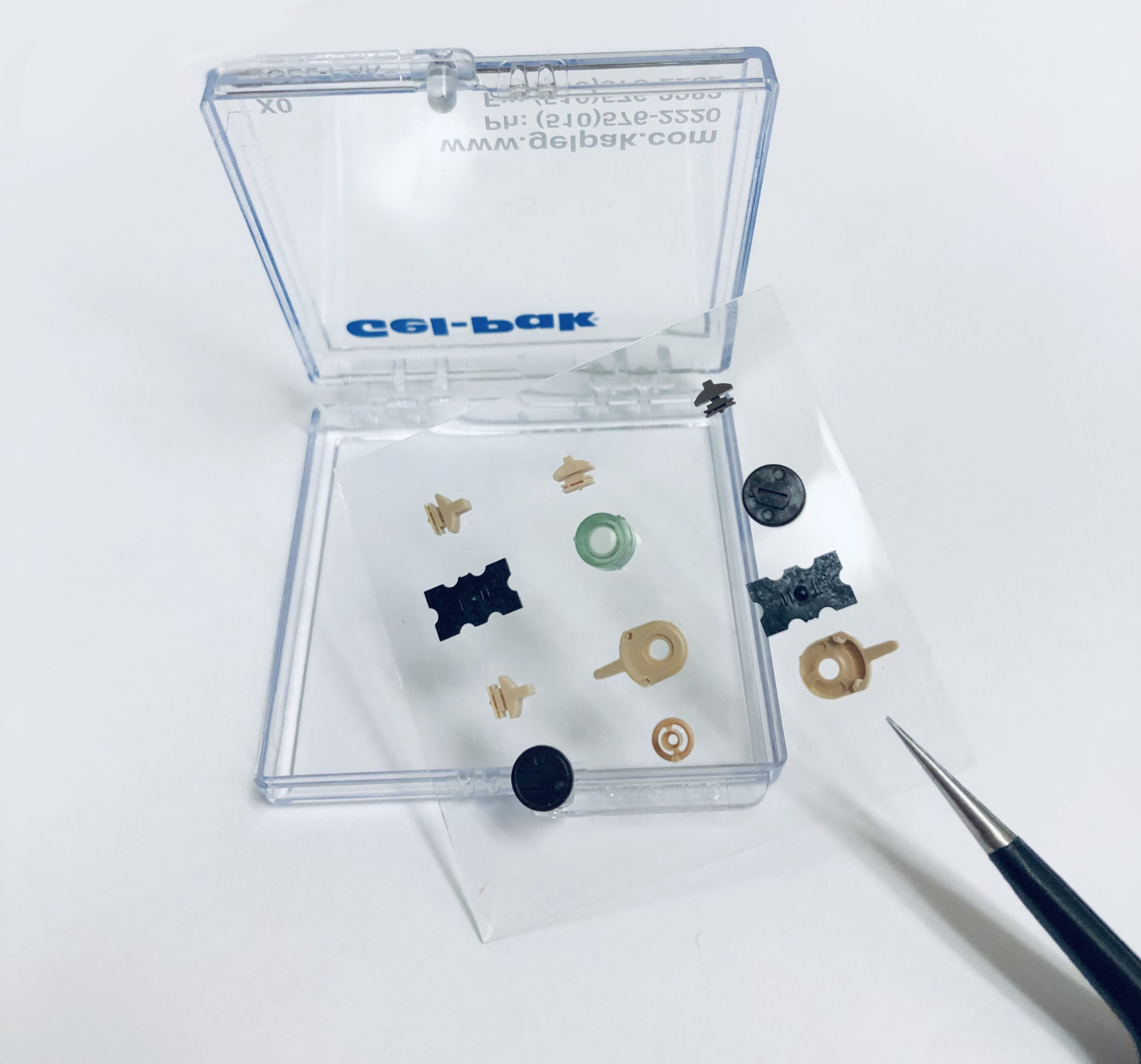Keeping Delicate Medical Devices Safe During Handling and Shipping

Today’s medical devices often integrate delicate ICs or MEMS, or require incredibly small, intricate components. Advances in manufacturing allow design and fabrication of parts with fine resolution, down to micron-sized features. Such small feature sizes create key challenges for handling, inspection, sorting, and shipping these components.
MEMS, with their combination of electronic and mechanical features that merge motion, sensing, and computation, are commonly used in a variety of medical devices. Examples include lab-on-a-chip, biomedicine, photonic energy/cardiovascular applications, and drug and gene therapy devices, to name a few. These medical MEMS feature highly sensitive topside surfaces that can be easily damaged if the devices flip over during handling or within their packages.
There are also many non-IC, micro-machined medical devices that are small, fragile, and easily damaged – particularly those destined for use in or on the human body, whether via surgical implantation or exploratory processes such as endoscopy. These devices also require great care and precision throughout processing, packaging, and shipping.
Medical coils require immobilization during manufacture and transport. Embolization coils are used in a catheter-based procedure that allows precise closure of abnormal blood flow in a blood vessel. These coils are highly delicate and fragile, as are similarly made coils used for cochlear implants. Because they are inserted into the human body, they must be effectively prevented from contamination, bending, or damage.
Enter Gel-Pak
Gel-Pak, a Delphon company, manufactures biocompatible packaging that protects small, sensitive medical components during a variety of applications. Our boxes, trays, slides and films utilize proprietary elastomers that offer a clean way to effectively immobilize medical components during sorting, kitting, handling and transport. Our products utilize medical-grade elastomers that meet the stringent needs of medical applications and are proven biocompatible through cytotoxicity testing – where live cells are exposed to our elastomers in various test conditions and observed for changes over time. (Technical datasheets with further details are available on our website.)
Our wide range of boxes and trays are available in a variety of configurations and tack levels and can be customized based on the customer’s requirements. For example, if a customer needs to ship a component, we can create a customized grid in the shipping box or tray, printed with medical-grade ink, to serve as a location map for vision systems or operators.
For parts being kitted for assembly into a device such as a pacemaker, our Gel-Films offer an ideal solution. Our WF Film product is comprised of a tacky gel film bonded to a metallized polyester substrate material. The product is made with an optional pressure-sensitive adhesive (PSA) backing that allows the film to be mounted to any flat working surface. Parts can be placed on the film and immobilized until they’re ready for insertion into the final module.
Use case example
A study was conducted (see figure below) to investigate Gel-Pak packaging’s suitability for shipping, processing, and storage of delicate 3D-printed steel medical devices. Consisting of surgical tools used for pulling tissue, sutures, and dental implants, these devices were very small in shape and surface texture. In addition, their sensitive active areas made them difficult to handle with traditional tweezers during inspection and assembly.

The Gel-Pak carriers enabled successful implementation of a streamlined method for the devices’ handling, microscope inspection, and protection. In addition, foreign contamination and damage was reduced when compared with traditional polyethylene bagging used for packaging.
More information about Gel-Pak’s state-of-the-art line of protective trays, boxes, films, and carriers for medical and other types of devices can be found at www.gelpak.com.